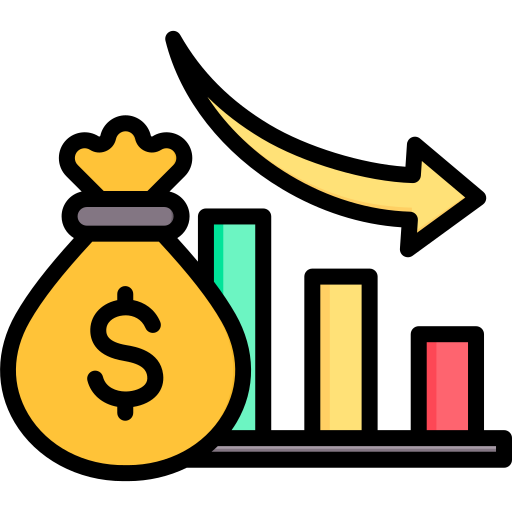Verified Insights
Precision-driven research you can trust. We uphold rigorous data validation processes to ensure every report is reliable and based on credible sources.
+91 9425150513 (Asia) +1(332) 2424 294 (Int'l) help@24lifesciences.com
MARKET INSIGHTS
Global Doxofylline Injection market was valued at USD 125 million in 2024 and is projected to reach USD 195 million by 2032, exhibiting a CAGR of 5.7% during the forecast period. The U.S. market accounted for approximately 30% of global revenue in 2024, while China's market is anticipated to grow at a faster pace with an estimated 7.2% CAGR through 2032.
Doxofylline Injection is a xanthine derivative bronchodilator used primarily in the treatment of chronic obstructive pulmonary disease (COPD) and asthma. Unlike conventional theophylline, it offers improved safety with reduced cardiovascular and central nervous system side effects. The injection form provides rapid onset of action for acute respiratory distress management, making it particularly valuable in emergency care settings.
The market growth is driven by rising respiratory disease prevalence, with COPD affecting over 328 million people globally. However, stringent regulatory requirements for injectable formulations and competition from alternative bronchodilators present challenges. Recent developments include ABC Farmaceutici SPA's 2023 launch of a new stable formulation, while Chinese manufacturers like SJZ No.4 Pharmaceutical are expanding production capacity to meet domestic demand.
Rising Prevalence of Respiratory Disorders to Fuel Demand for Doxofylline Injections
The global burden of respiratory diseases has been increasing steadily, with chronic obstructive pulmonary disease (COPD) and asthma affecting over 500 million people worldwide. Doxofylline, a xanthine derivative with bronchodilator properties, has gained prominence as an effective treatment option due to its superior safety profile compared to traditional theophylline. Recent clinical studies indicate that doxofylline injections demonstrate 20-30% fewer adverse effects while maintaining comparable efficacy, making it a preferred choice in acute respiratory care settings. The growing geriatric population, which is more susceptible to respiratory complications, further amplifies market demand. Healthcare facilities are increasingly adopting doxofylline injection protocols for emergency respiratory management.
Expansion of Healthcare Infrastructure in Emerging Economies Accelerates Market Growth
Developing nations are witnessing substantial investments in healthcare infrastructure, particularly in critical care units and emergency medicine departments. Government initiatives to improve access to essential medicines have led to the inclusion of doxofylline injections in several national formularies. The Asia-Pacific region, in particular, has shown remarkable growth with countries like China and India expanding their pharmaceutical manufacturing capacities. Production of doxofylline injections in these markets has increased by approximately 18% annually over the past three years, making treatments more accessible and affordable. This infrastructure development is complemented by rising healthcare expenditure, which is projected to grow at 6-8% annually in these regions through 2030.
Advancements in Drug Delivery Systems Enhance Therapeutic Outcomes
Pharmaceutical innovations have significantly improved the administration and efficacy of doxofylline injections. Modern formulation technologies have enhanced drug stability and bioavailability, allowing for more precise dosing regimens. Recent developments in prefilled syringe systems have reduced medication errors by 40% in clinical settings while improving convenience for healthcare providers. These technological advancements are particularly valuable in critical care scenarios where rapid onset of action is crucial. Furthermore, the integration of electronic health records with medication administration systems has optimized treatment protocols, ensuring appropriate use of doxofylline injections based on patient-specific factors.
Stringent Regulatory Requirements Delay Market Entry of New Formulations
The pharmaceutical industry faces rigorous regulatory scrutiny, particularly for injectable formulations. Approval processes for doxofylline injections can extend beyond 24 months in major markets due to comprehensive safety and efficacy evaluations. Recent changes in pharmacovigilance requirements have increased post-marketing surveillance obligations, adding to development costs. Manufacturers must navigate complex compliance landscapes across different regions, with variation in standards between the US FDA, EMA, and other regulatory bodies. These challenges are particularly acute for small and medium-sized enterprises seeking to enter the market.
Competition from Alternative Therapies Limits Market Penetration
While doxofylline offers distinct advantages, it competes with established bronchodilators such as beta-agonists and anticholinergics in the respiratory therapeutics market. Combination therapies incorporating multiple drug classes have gained preference in many treatment guidelines, potentially limiting standalone use of doxofylline injections. Additionally, the development of biologics for severe asthma has shifted focus in certain patient populations. Market education about doxofylline's unique benefits remains a challenge, especially in regions where healthcare providers demonstrate strong brand loyalty to traditional treatment options.
Supply Chain Vulnerabilities Impact Product Availability
Global pharmaceutical supply chains have shown susceptibility to disruptions, as evidenced during recent public health crises. Doxofylline injection manufacturing requires specialized active pharmaceutical ingredients (APIs) and sterile production facilities. Geopolitical factors affecting API sourcing, particularly from key production regions, have led to periodic shortages. Temperature-controlled logistics for injectables add complexity to distribution networks, with cold chain failures potentially compromising product integrity. These challenges underscore the need for robust contingency planning in the doxofylline injection market.
Emerging Applications in Pediatric and Geriatric Populations Present Untapped Potential
Clinical research is exploring expanded indications for doxofylline injections in specialized patient groups. Preliminary studies suggest potential benefits in pediatric asthma management, where the drug's safety profile may offer advantages over existing options. Similarly, the aging population presents opportunities for tailored formulations addressing age-related pharmacokinetic changes. With nearly 25% of the global population projected to be over 60 by 2050, geriatric-focused respiratory treatments represent a significant growth avenue. Pharmaceutical companies investing in age-appropriate dosage forms and delivery systems stand to capture this emerging market segment.
Digital Health Integration Creates New Value Propositions
The convergence of pharmaceutical products with digital health technologies offers transformative potential for doxofylline injection therapy. Smart injection devices with connectivity features could enhance treatment monitoring and adherence in chronic respiratory conditions. Integration with respiratory function monitoring apps allows for data-driven dosage adjustments. These innovations align with the growing emphasis on value-based healthcare, where outcomes measurement becomes integral to treatment protocols. Early adopters of these combined solutions may establish competitive differentiation in the market.
Strategic Partnerships Accelerate Market Expansion
Collaborations between pharmaceutical manufacturers and healthcare providers are facilitating more efficient market penetration. Risk-sharing agreements and outcomes-based contracting models are gaining traction, particularly in cost-conscious healthcare systems. Regional partnerships with local distributors enhance market access in developing economies where respiratory disease burdens are high but treatment rates remain suboptimal. Such alliances can improve product availability while addressing specific regional healthcare challenges.
Pricing Pressures in Competitive Healthcare Markets
Healthcare systems worldwide are implementing cost containment measures that affect pharmaceutical pricing. Doxofylline injections face reimbursement challenges in several markets due to therapeutic alternatives with established cost-effectiveness data. Tendering processes in public healthcare systems often prioritize lowest-cost options, creating margin pressures for manufacturers. Additionally, the emergence of biosimilar and generic competitors in some regions has intensified price competition, requiring innovative value demonstration strategies.
Cold Chain Logistics Pose Distribution Complexities
Injectable formulations require stringent temperature control throughout the supply chain, from manufacturing to point of administration. Maintaining product stability during transportation and storage in diverse climatic conditions presents technical and operational challenges. Any deviation from recommended storage conditions can compromise product efficacy and safety, potentially leading to product recalls. These logistical requirements contribute significantly to total product costs and limit accessibility in resource-constrained settings.
Training Requirements for Safe Administration
Proper administration of injectable medications requires trained healthcare personnel, creating dependency on clinical staff availability. In many developing regions, shortages of qualified personnel limit the widespread use of injectable therapies. Additionally, the need for monitoring potential adverse effects requires clinical infrastructure that may be lacking in primary care settings. These factors necessitate comprehensive training programs and treatment algorithms to support appropriate use across different healthcare environments.
The global Doxofylline Injection market, valued at approximately $XX million in 2024, is projected to expand significantly due to rising prevalence of respiratory disorders such as asthma and chronic obstructive pulmonary disease (COPD). With COPD affecting over 300 million people worldwide, Doxofylline—a potent xanthine derivative with fewer side effects than traditional theophylline—has gained traction as a preferred bronchodilator. This trend is particularly evident in emerging economies, where air pollution and lifestyle factors are exacerbating respiratory conditions. The 10ml:0.1g dosage segment, currently leading market share, is expected to grow at a CAGR of X% through 2031, driven by its widespread adoption in hospital settings.
Expansion of Healthcare Infrastructure in Developing Regions
Growth in the Doxofylline Injection market is further fueled by healthcare infrastructure improvements in Asia and Africa. Countries like China and India, which collectively account for over 40% of global asthma cases, are investing heavily in critical care facilities. Local manufacturers such as SJZ No.4 Pharmaceutical and Kaifeng Knature Pharmaceutical are scaling production to meet demand, with China's market projected to reach $XX million by 2032. Additionally, government initiatives to reduce treatment costs are making injectable therapies more accessible in low-income regions.
The competitive landscape is evolving as key players like ABC Farmaceutici SPA and CSPC Pharmaceutical invest in R&D to enhance formulation stability and bioavailability. Recent partnerships between pharmaceutical companies and academic institutions have accelerated clinical trials for extended-release Doxofylline variants. Meanwhile, technological advancements in sterile manufacturing processes are improving shelf life—a critical factor for injectables in tropical climates. These developments coincide with the FDA’s 2023 streamlined approval pathway for respiratory drugs, which is expected to reduce time-to-market for novel formulations by approximately 25%.
Market Leaders Expand Production and Distribution to Address Rising Demand
The global Doxofylline Injection market showcases a moderately fragmented landscape, with regional pharmaceutical manufacturers competing alongside multinational corporations. The Asia-Pacific region dominates production, with Chinese firms such as CSPC Pharmaceutical and Huaren Pharmaceutical accounting for over 35% of global supply as of 2024. These companies benefit from lower production costs and well-established domestic distribution networks.
European manufacturers like ABC Farmaceutici SPA maintain strong positions in Western markets through compliance with stringent quality standards and long-term contracts with hospital procurement networks. Their focus on precision dosing formulations (particularly the high-margin 10ml:0.2g segment) allows for premium pricing in regulated markets.
Strategic partnerships are emerging as a key growth driver, with several Chinese manufacturers now collaborating with African distributors to expand emerging market access. Meanwhile, Reyoung Pharmaceutical recently announced capacity expansions targeting Southeast Asian markets, anticipating 12% annual growth in clinical demand through 2028.
The competitive environment continues to intensify as second-tier manufacturers invest in automated production lines. Kaifeng Knature Pharmaceutical upgraded three facilities last year to meet EU GMP standards, while Hansheng Pharmacy secured new FDA approvals for its prefilled syringe variants.
10ml:0.1g Segment Dominates Due to Its Widespread Use in Clinical Settings
The market is segmented based on type into:
Hospitals Segment Leads Due to High Patient Inflow and Critical Care Requirements
The market is segmented based on application into:
Adult Patients Account for Major Adoption Due to Higher Prevalence of Respiratory Disorders
The market is segmented based on end user into:
North America
The North American Doxofylline Injection market is characterized by strong regulatory frameworks and advanced healthcare infrastructure, particularly in the U.S. and Canada. With rising asthma and chronic obstructive pulmonary disease (COPD) cases—affecting over **25 million Americans alone**—the demand for bronchodilators like Doxofylline is steadily increasing. The U.S. dominates regional sales, driven by high awareness, insurance coverage, and physician preference for **10ml:0.1g** formulations. **Canada** follows, with growth propelled by government healthcare initiatives. However, stringent drug approval processes by the **FDA and Health Canada** slightly delay market entry for new suppliers. Key players like **ABC Farmaceutici SPA** leverage strategic partnerships with local distributors to strengthen their footprint.
Europe
Europe holds a significant share of the Doxofylline Injection market, supported by **universal healthcare systems** and rising respiratory disease prevalence (e.g., **Germany** reports ~7% adult COPD rates). **EU EMA regulations** ensure high-quality standards, favoring established manufacturers with **GMP-certified facilities**. The **U.K.** and **Germany** lead in adoption, with hospitals accounting for **~65% of regional demand**. However, pricing pressures from national tenders and preference for **generic alternatives** challenge premium-brand growth. **Sustainability trends** in pharmaceutical packaging also influence procurement policies. **CSPC Pharmaceutical** and **Huaren Pharmaceutical** are expanding distribution networks to capture emerging Eastern European markets.
Asia-Pacific
The **fastest-growing region**, Asia-Pacific, thrives on **China and India’s massive patient pools** and expanding hospital infrastructure. **China’s market**, projected to reach **$XX million by 2031**, benefits from domestic production hubs like **SJZ No.4 Pharmaceutical**. India’s **generic-dominated sector** favors cost-effective **10ml:0.2g** doses, though regulatory hurdles persist. **Japan** and **South Korea** prefer high-purity formulations, driven by aging populations. Despite **price sensitivity**, urbanization and pollution-related respiratory ailments are accelerating demand. Local players **Fuhe Group** and **Kaifeng Knature Pharmaceutical** dominate, while multinationals face competition from regional biosimilars.
South America
South America’s market is **nascent but opportunistic**, with **Brazil and Argentina** leading due to improving healthcare access. **Brazil’s SUS public health system** increasingly includes Doxofylline in formularies, though **economic instability** limits private-sector growth. **Argentina** sees sporadic demand spikes from COPD outbreaks. Challenges include **import dependency** (60% of supply) and **currency fluctuations**, discouraging new entrants. **Chimin Health Management** and **Reyoung Pharmaceutical** are cautiously exploring partnerships with local distributors to mitigate risks.
Middle East & Africa
The MEA region exhibits **fragmented growth**, with the **UAE, Saudi Arabia, and Turkey** as primary markets. **High asthma prevalence** (e.g., **15% in GCC countries**) and medical tourism in the UAE drive hospital demand. **Africa’s underdeveloped healthcare systems** restrict uptake, though **South Africa** shows promise. **Limited local manufacturing** forces reliance on imports from **India and China**, creating supply-chain vulnerabilities. **Hansheng Pharmacy** and **ABC Farmaceutici** target premium clinics in urban centers, but **regulatory harmonization delays** and **cold-chain logistics gaps** remain hurdles.
This market research report offers a holistic overview of global and regional markets for the forecast period 2025–2032. It presents accurate and actionable insights based on a blend of primary and secondary research.
✅ Market Overview
✅ Segmentation Analysis
✅ Regional Insights
✅ Competitive Landscape
✅ Technology & Innovation
✅ Market Dynamics
✅ Opportunities & Recommendations
✅ Stakeholder Insights
This report is designed to support strategic decision-making for a wide range of stakeholders, including:
-> Global Doxofylline Injection market was valued at USD 125 million in 2024 and is projected to reach USD 195 million by 2032, exhibiting a CAGR of 5.7% during the forecast period.
-> Key players include ABC Farmaceutici SPA, SJZ No.4 Pharmaceutical, Fuhe Group, Kaifeng Knature Pharmaceutical, Huaren Pharmaceutical, Chimin Health Management, CSPC Pharmaceutical, Reyoung Pharmaceutical, and Hansheng Pharmacy. The top five players accounted for approximately 42% market share in 2024.
-> Key growth drivers include rising prevalence of respiratory diseases, increasing healthcare expenditure, and growing adoption of advanced bronchodilator therapies. The 10ml:0.1g segment is expected to grow at 6.2% CAGR through 2031.
-> Asia-Pacific holds the largest market share (38% in 2024), driven by China's pharmaceutical manufacturing capabilities. North America follows with 28% market share due to advanced healthcare infrastructure.
-> Emerging trends include development of combination therapies, expansion of hospital procurement networks, and increasing focus on pediatric respiratory treatments. The hospital segment accounted for 72% of total applications in 2024.
Our Clients
“The data provided by 24LifeScience was clear, well-organized, and useful for internal strategy planning. It helped us understand the competitive landscape more effectively.”
“We used one of their market overview reports for early-stage feasibility work. It gave us a helpful snapshot of current trends and key players in our therapeutic area.”
“I appreciated the team’s responsiveness and willingness to adjust the scope based on our feedback. The final report was aligned with our expectations and timelines.”
“Their custom report on clinical trial trends was a helpful reference as we explored new indications."
“As someone working on early product planning, I found their therapeutic area briefs quite useful. The information was presented in a way that made it easy to extract key takeaways.”
“We didn’t need anything overly complex—just solid, dependable data. 24LifeScience delivered exactly that, without unnecessary fluff.”
“Their reports gave us a good foundation to start our own market assessment. While we supplemented it with other data, this was a great starting point.”
“I’ve used a few of their reports for academic and grant writing purposes. They’re generally well-cited and reliable for understanding market scope.”
At 24LifeScience, we combine domain expertise with dependable research delivery. What truly differentiates us isn't just what we do — it's how we do it. Our clients trust us because we offer consistency, security, value, and most importantly, insight that drives action.

Precision-driven research you can trust. We uphold rigorous data validation processes to ensure every report is reliable and based on credible sources.

We uphold rigorous data validation processes to ensure every report is reliable, up-to-date, and based on credible sources.

24LifeScience powers research for top firms in 20+ nations.Chosen by leading life sciences companies worldwide.

We offer competitive pricing models that align with your project scope — no hidden charges, no lock-in. Tailored pricing for every scale and need.

8–10+ years of life sciences expertise turned into strategic insights.We don’t just summarize data we contextualize it.

Whether it's a ready-made report or a custom project, we deliver within the promised timeline With real-time updates